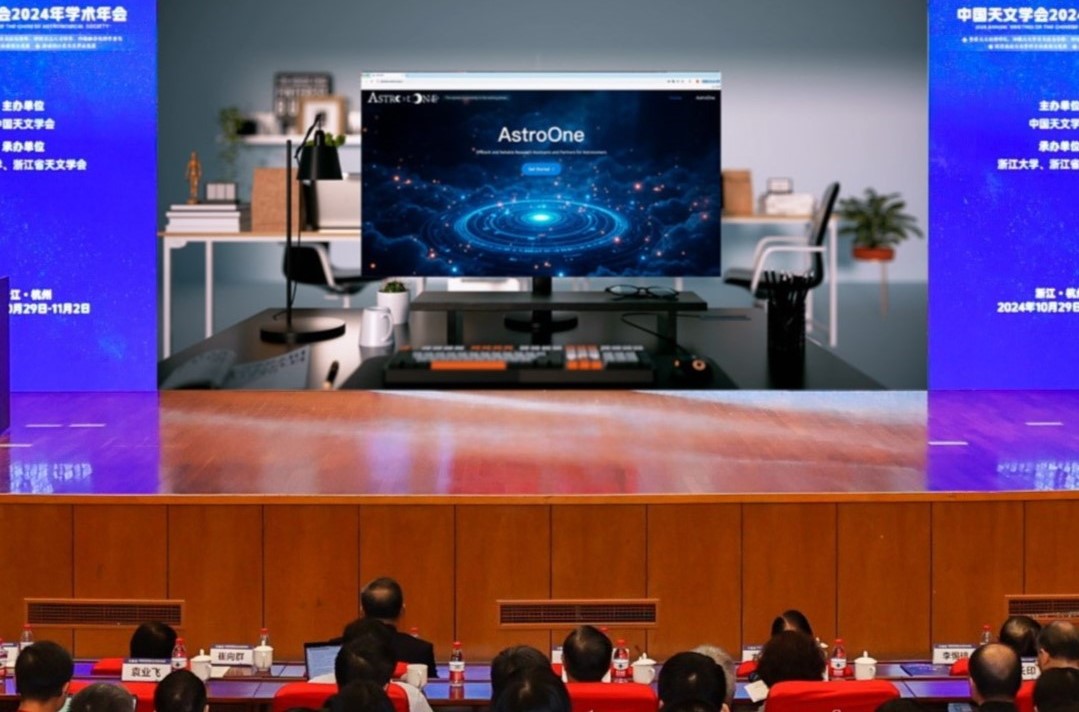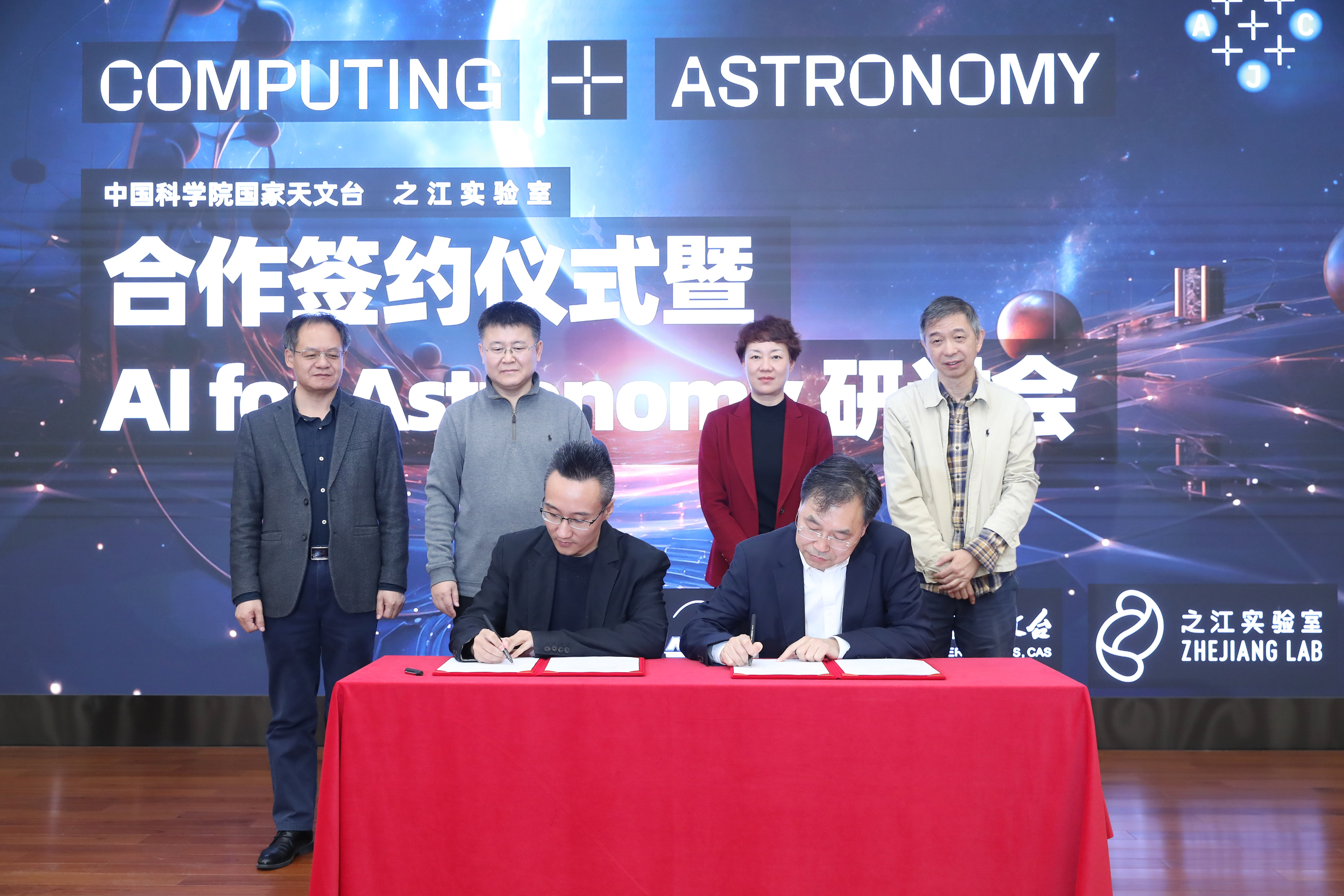

On October 30, AstroOne, a large language model for astronomy jointly developed by Zhejiang Lab and the National Astronomical Observatories, Chinese Academy of Science (NAOC), made its debut at the 2024 Annual Academic Conference of the Chinese Astronomical Society, attracting widespread attention from the astronomy community.

Currently, AstroOne, boasting 70 billion parameters and 32 billion tokens of astronomical text corpus, has been evaluated by 10,000 astronomy assessment datasets. It stands as the leading large language model in terms of astronomical knowledge capabilities.
"Traditional astronomical research urgently needs the empowerment of artificial intelligence to overcome the challenges of astronomical data processing," said LIU Jifeng, Director of the NAOC. "The 'voice of cosmos' is extremely noisy, with an immense amount of information. It is a significant challenge for us to process the hundreds of petabytes of astronomical data generated annually."
AstroOne can provide powerful assistance for astronomical research. In addition to rapidly reading and learning professional literature, it can quickly detect potential errors, data anomalies, and logical contradictions in research, reducing human errors. It is also capable of extracting and checking information from vast amounts of literature, aiding in the validation of hypotheses and the reliability of results. Furthermore, AstroOne enables interdisciplinary knowledge reasoning and integration, helping astronomers break through knowledge boundaries, spark innovative ideas, and generate imaginative research hypotheses.

Besides AstroOne, ZJ Lab and the NAOC have also jointly developed an astronomical text-image model and four specialized astronomical models: FALCO for rapidly capturing extreme transient sources, SpecCLIP for stellar surveys, SolarGPT for accurate prediction of solar activities, and the GRBs X-ray detection model for real-time identification of gamma-ray bursts (GRBs) and other high-energy transient sources.












